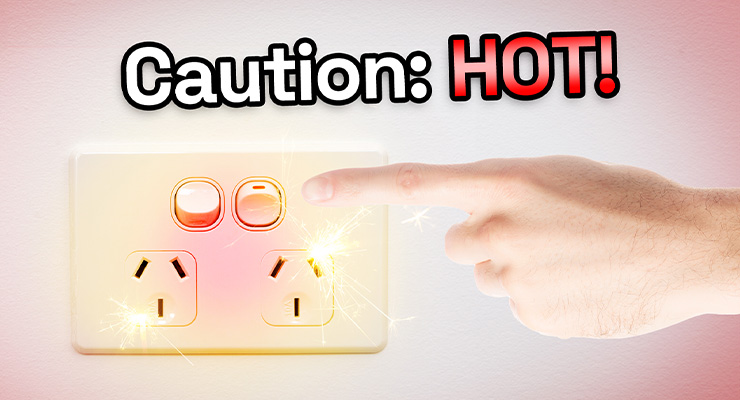Fast read
In modern life, electricity powers nearly everything, making power outlets essential electrical components of homes. However, if you notice an outlet feeling hot, it's often a dangerous sign indicating an issue with your electrical system.
The outlet might be overworked, experiencing excessive demand on the circuit, or suffering from oversized fuses or breakers, common in older homes.
To address this, first, identify the affected outlets and turn off the circuit breaker. Use an outlet tester to check for dead outlets, as warm outlets might indicate internal deterioration.
Then, assess the wiring, but if unsure, consult a professional electrician for safe resolution. Minimise fire risks by limiting plug usage in warm outlets, and if problems persist, seek professional assistance promptly to ensure electrical safety in your home.
What do I do if my outlet feels hot?
Nowadays, electricity is considered a way of life, with almost everything relying on power. Whether you are charging your phone or trying to watch the news after a long day of work. Electricity is the backbone of all these operations. This electricity will for many people come from power outlets, making them one of the most hardworking items in your home. When plugging or unplugging an electrical appliance, you may notice that the plug or electrical outlet is warm.
If this is the case, it is usually a dangerous sign that something is wrong with your electrical system. If you notice an electrical outlet in your home is heating up. You must stop using that outlet immediately and identify the problem. In some cases, it may require professional expertise.
So, let’s examine why your outlets could be warm to touch and what to do in different situations.
Why is my outlet warm to the touch?
Overworking
Several different reasons could be the cause of a warm power outlet. The most common reason for an electrical outlet to be warm is because it is being overworked.
Every electrical outlet is designed to be able to run a specific voltage. This means the outlet begins to overheat when this is not followed and exceeded. To determine if this is what the cause of heating is.

You can see if the outlet is warm before and after having something plugged into it. If this is the case, try to reduce the number of appliances plugged into your outlet as it is most likely overloaded. However, there are still a number of other reasons that could cause your electrical outlet to overheat, so let’s look at them.
Excessive demand
Another reason your electrical outlet could be warm to the touch is excessive demand on the circuit. Regular household electrical circuits are designed in a series whereby the circuit wire loops through the electrical box and passes from outlet to outlet. This means that the electrical current used by one outlet may pass to another outlet on the same circuit.
This means that if there is an excessive current. If you notice a warm electrical outlet even when nothing is plugged into it, you likely need to rewire your circuits. Make sure plugs and light switches in a room aren’t connected to the same circuit. Rewiring isn’t a DIY job and should be done by a professional electrician.
Oversizing
The final reason your electrical outlet could be warm to the touch is that there may be an oversized fuse or breaker. This is a more common problem in older homes that were not designed to handle many electronics.
In simple terms, this problem occurs when older electrical systems aren’t rated to handle the high usage they are expected to do nowadays. This may indicate that it is time to upgrade your electrical wiring system.
So, what can you do if your electrical outlet is warm to the touch?
When you realise an outlet is warm to touch, the first thing to do is to identify how many outlets are warm or if it is just one. You must turn off the circuit breaker and use an outlet tester to identify potentially dead outlets.
After this is done, there is a high likelihood that the electrical outlets are bad internally and the connections have deteriorated internally. Make sure you turn off the electricity and check any wiring of the suspected failed outlets.
Once these two tasks have been done, you can inform an electrician about your issue if you are not confident in your capabilities. There is no problem contacting a licensed electrician who can perform the initial analysis and fix the wiring for you.
If you find a warm electrical outlet in your home, make sure you do everything to minimise any risk of an electrical fire hazard. This is the main concern. This means you should limit the number of plugs in an outlet that is warm.
If this doesn’t fix the problem, or if you identify damaged wiring. The best thing to do is to contact your local electrician to assess and fix the issues professionally.



